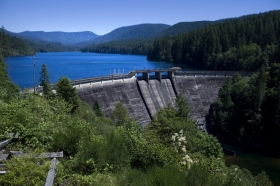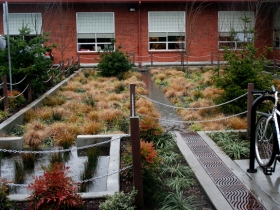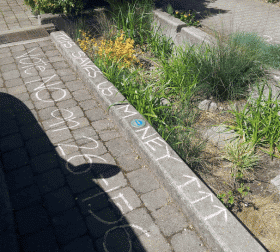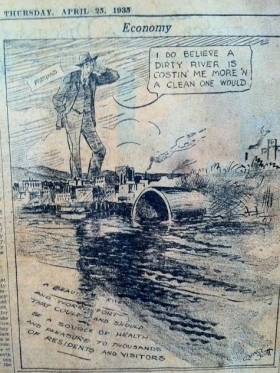Drowned out by Measure 26-156 hype: the green programs Portland voters could lose
Ramona DeNies, May 14 2014
 On May 20th, Portland voters decide the fate of the City’s Water Bureau and the Bureau of Environmental Services (BES).
On May 20th, Portland voters decide the fate of the City’s Water Bureau and the Bureau of Environmental Services (BES).
Will we transfer control of these agencies — and the $15 billion in public assets that they manage — to the future board members of a new, independent water district?
Or will we say “no” to Measure 26-156, as eleven Intertwine Alliance partners urge you to do?
 For months, local media have rained down coverage on the Measure: profiling its backers, which include the city’s major water users; asking if the proposed public district would cause water bills to rise or fall; examining the initiative’s language, which could exclude parts of east Portland from voting in the new district’s board, and also prohibit many qualified experts from serving.
For months, local media have rained down coverage on the Measure: profiling its backers, which include the city’s major water users; asking if the proposed public district would cause water bills to rise or fall; examining the initiative’s language, which could exclude parts of east Portland from voting in the new district’s board, and also prohibit many qualified experts from serving.
But less covered in the pre-election hubbub are moves the Measure's backers have made against city environmental programs — programs voters could lose if oversight of Portland’s Water Bureau and BES is wrested from City Hall.
We asked a few of our partners which Water Bureau/BES program they’d champion. Here’s what they had to say:
What valuable — and possibly threatened — City of Portland program should voters keep in mind when deciding on Measure 26-156?
 “Innovative community greening efforts championed by BES — such as tree planting, rain gardens, green space preservation, and the removal of under-utilized pavement — safeguard clean water, help revitalize neighborhoods, and protect public investment in our storm drain network.” - Eric Rosewall, Depave
“Innovative community greening efforts championed by BES — such as tree planting, rain gardens, green space preservation, and the removal of under-utilized pavement — safeguard clean water, help revitalize neighborhoods, and protect public investment in our storm drain network.” - Eric Rosewall, Depave “BES’s Tabor to the River Program cleans stormwater before it enters the Willamette, soaks up carbon pollution, and beautifies our city, while saving taxpayers $63 million.” - Jenna Garmon, Northwest Biocarbon Initiative
“BES’s Tabor to the River Program cleans stormwater before it enters the Willamette, soaks up carbon pollution, and beautifies our city, while saving taxpayers $63 million.” - Jenna Garmon, Northwest Biocarbon Initiative
 Through storytelling outlets like
Through storytelling outlets like
Add new comment